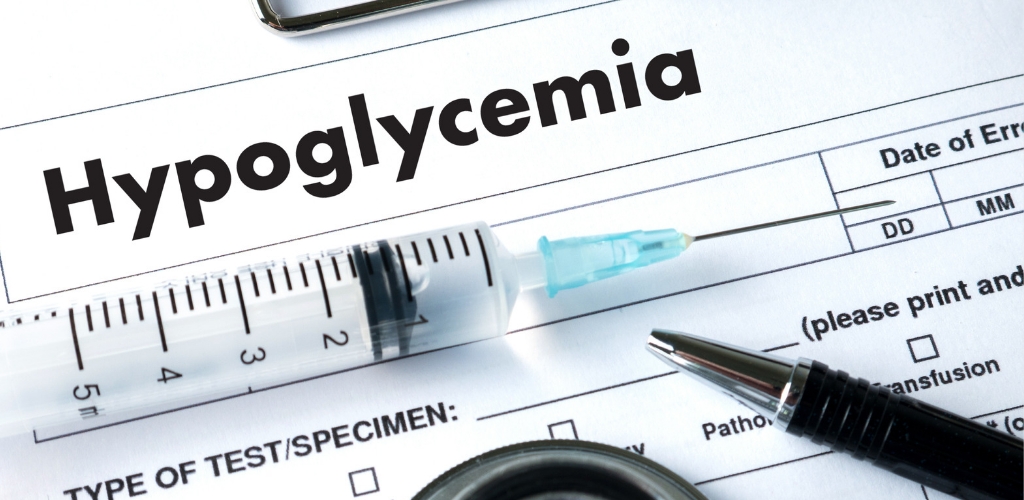Hypoglycemia, or low blood sugar, is a common concern for individuals with diabetes, particularly those treated with insulin, sulfonylurea, or glinide. It can lead to various complications and requires prompt treatment. Understanding the pathophysiology, prevalence, and prevention of hypoglycemia is crucial for effectively managing diabetes. This blog will provide a comprehensive overview of these aspects, aiming to educate and raise awareness among individuals with diabetes and their caregivers.
Read more blogs on – Diabetes
Pathophysiology of Hypoglycemia in Diabetes
Hypoglycemia in diabetes is primarily attributed to the use of certain medications, such as insulin and sulfonylureas, which can lead to a reduction in blood sugar levels. Patients with diabetes, especially those with type 1 diabetes, are at a higher risk of experiencing hypoglycemia due to the absence of endogenous insulin production. The body’s counterregulatory mechanisms, including hormonal and neural signals, play a vital role in preventing hypoglycemic episodes. However, impairments in these mechanisms, along with hypoglycemia unawareness, can predispose individuals to severe hypoglycemia.
Prevalence of Hypoglycemia in Diabetes
The prevalence of hypoglycemia in diabetes is a significant concern, particularly in individuals undergoing intensive glucose-lowering therapy. Studies have reported varying rates of hypoglycemic events, with a higher frequency observed in patients with type 1 diabetes compared to those with type 2 diabetes. Severe hypoglycemia can have a substantial impact on the quality of life and may lead to serious complications. Therefore, understanding the factors contributing to hypoglycemia and identifying individuals at a higher risk are essential for effective management.
Prevention of Hypoglycemia in Diabetes
Preventing hypoglycemia in individuals with diabetes, especially those receiving insulin or other hypoglycemic medications, is a key aspect of their care. This involves a multifaceted approach, including:
- Regular monitoring of blood sugar levels
- Individualized treatment plans
- Patient education
The “15-15 rule,” recommended by the American Diabetes Association, provides a simple and effective framework for managing mild to moderate hypoglycemia. It involves:
- Consuming 15 grams of fast-acting carbohydrates
- Monitoring blood sugar levels
- Additional carbohydrate intake if needed
For severe hypoglycemia, emergency glucagon and/or intravenous glucose may be required.
In conclusion, hypoglycemia in diabetes is a complex and potentially serious condition that requires careful attention and proactive management. By understanding its underlying mechanisms, recognizing its prevalence, and implementing appropriate preventive measures, individuals with diabetes can effectively reduce the risk of hypoglycemic events and lead a healthier life.
Maintaining healthy glycemic levels is essential for optimal well-being, and both genetic and non-genetic factors can influence it.
Genetic factors:
- Gene variants: Specific variations in genes involved in insulin production, insulin sensitivity, and glucose metabolism can predispose individuals to higher or lower glycemic levels. For example, mutations in the genes encoding glucokinase (GCK) or hepatocyte nuclear factor 4-alpha (HNF4A) can impair insulin secretion or action, leading to hyperglycemia.
- Family history: Having a family history of diabetes or other metabolic disorders significantly increases the risk of developing glycemic imbalances. This is because genetic susceptibility can be inherited from parents and contribute to the disease manifestation.
Non-genetic factors:
- Diet: Excessive consumption of processed foods, sugary drinks, and saturated fats can lead to insulin resistance and elevated blood sugar levels. Conversely, a diet rich in fruits, vegetables, whole grains, and lean protein promotes healthy glycemic control.
- Physical activity: Regular physical exercise enhances insulin sensitivity and glucose uptake by muscles, thereby lowering blood sugar levels. Conversely, a sedentary lifestyle can contribute to insulin resistance and hyperglycemia.
- Weight management: Obesity, particularly visceral fat accumulation, is a major risk factor for insulin resistance and type 2 diabetes. Maintaining a healthy weight through diet and exercise is crucial for glycemic control.
- Stress: Chronic stress can trigger the release of cortisol, a hormone that counteracts insulin and elevates blood sugar levels. Managing stress through relaxation techniques can help maintain healthy glycemic balance.
- Medications: Certain medications, such as corticosteroids and some antipsychotics, can have side effects that elevate blood sugar levels. It’s important to be aware of these potential effects and discuss them with your doctor.
- Environmental factors: Exposure to environmental toxins, such as air pollution and certain chemicals, can disrupt insulin signaling and contribute to glycemic imbalances.
Understanding the interplay of genetic and non-genetic factors affecting glycemia is crucial for maintaining optimal health. By adopting healthy lifestyle choices, such as a balanced diet, regular exercise, and stress management, individuals with genetic susceptibility can minimize their risk of developing glycemic problems. Additionally, personalized medical approaches that consider both genetic and environmental factors can lead to more effective diabetes prevention and management strategies.
Remember, consulting a healthcare professional for personalized advice and regular monitoring of glycemic levels is essential for maintaining good health and preventing complications associated with glycemic imbalances.




